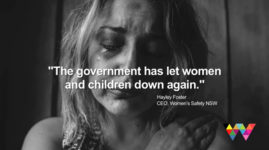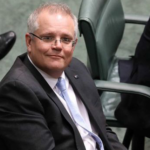Government Ignores Vital Family Violence Reducing Solutions

Hannah Clarke and her three children were doused in petrol and burnt to death by her ex-partner in a Brisbane suburb on 19 February. She is one of nine women who’ve been violently killed so far this year, according to the Counting Dead Women Australia researchers of Destroy The Joint.
Outrage over the brutal multiple murder led to a special “nothing off the table” meeting of state and territory women’s safety ministers convened on 6 March, with a subsequent scheduled COAG forum of the same ministers being held a week later, with neither gatherings resulting in any proposals.
This lack of new measures has led women’s safety advocates to question the government’s decision to simply increase prevention campaigns, without making much-needed changes to both the civil and criminal justice systems that could significantly reduce domestic and family violence.
Indeed, the Australian Women Against Violence Alliance (AWAVA) had already presented the ministers with five key recommendations, which included fully funding specialist organisations, a national risk assessment and referral process, as well as ensuring access to assistance for all.
AVO standards
Women’s Safety NSW chief executive Hayley Foster told Sydney Criminal Lawyers that of the five AWAVA recommendations there are two solutions that she draws attention to as being of particular significance.
“Most importantly, we need apprehended violence orders to be enforced,” Ms Foster emphasised. “Right now, across the nation, when offenders are brought before their local or magistrates court for breaching those orders, they are regularly let off with non-custodial alternatives.”
The women’s advocate stressed that the AWAVA isn’t suggesting mandatory sentencing. Rather, it would like to see specialist domestic violence (DV) prosecutors and magistrates established, as at present, the risk to a woman’s safety can be heightened depending on the magistrate they see.
Foster also outlined that she’s been involved in surveying DV advocacy workers at 117 local courts across NSW and found that there are substantial variations in the way magistrates deal with such matters, which includes differences in penalties being imposed and protections afforded to victims.
Parental responsibility
The other recommendation that Foster highlights is that the presumption of equal shared parental responsibility contained in part 7 division 2 of the Family Law Act 1975 (Cth) (the Act) should be removed all together, so as to ensure the safety of children.
Section 61B of the Act defines parental responsibility as “duties, powers, responsibilities and authority” that a parent has in relation to a child, while section 61DA stipulates that there’s to be a presumption of equal shared parental responsibility when the court makes an order.
According to Foster, when entering the family law system, most women are told that “no matter how violent and abusive their ex-partner is, he’s going to get supervised, overnight access to the children if he wants to, and she is warned against making too many allegations or fighting this”.
This claim was backed up by Foster with figures that show that although 70 to 85 percent of family cases deal with violence, only 3 percent of matters result in no face-to-face time given to fathers. And this set of circumstances leads some women to decide not to take action in violent situations.
These are “two really important changes that – yes – if implemented right away would dramatically increase women and children’s safety within weeks,” Ms Foster said, adding in conclusion that she has no idea why the government won’t even consider these vital recommendations.







